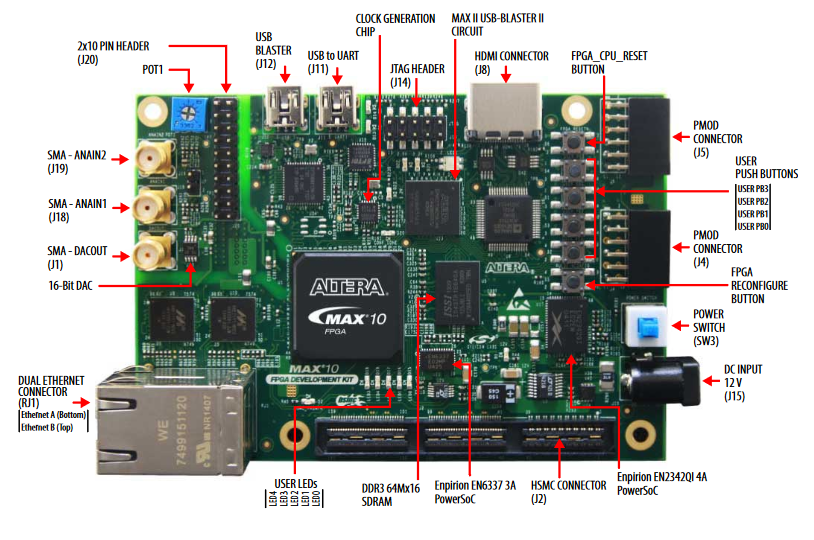FPGA Prototyping Services
24/04/2025, hardwarebee
FPGA, or Field-Programmable Gate Array, prototyping stands out due to its reconfigurability and adaptability, allowing engineers to iterate on their designs without the need for physical hardware modifications. Emerging from its early applications in the 1980s, FPGA prototyping has matured into a vital tool within sectors such as telecommunications, computing, and video processing. It uniquely addresses the need for rapid design validation and refinement, significantly outpacing traditional methods.
What is FPGA Prototyping?
FPGA prototyping is an essential part of the development process for modern electronics. It involves using Field-Programmable Gate Arrays (FPGAs) to test and validate complex designs before finalizing them. This process is vital for ensuring that the electronic systems meet the performance requirements and are optimized for real-world applications. Prototyping can help in reducing development time and cost. During this stage, design teams can explore various design ideas and configurations to achieve optimal performance. FPGA prototyping services support the development of systems that often incorporate advanced technologies like artificial intelligence and video processing.
Definition and Overview
FPGA prototyping refers to the use of programmable logic devices to iterate and test design concepts. These devices can be configured and reconfigured to simulate various functionalities. Through this method, developers can verify their designs and ensure they meet the desired specifications and requirements. This approach offers flexibility and speed, which are crucial in the competitive field of product development. With the use of prototyping tools, engineers can quickly move from design concepts to functional prototypes. This enables seamless integration in the wider software development and SoC design environments.
Importance of FPGA Prototyping in Modern Design
FPGA prototyping has become a cornerstone of modern design. Designers rely on it to bring their complex ideas to life with speed and efficiency. These platforms are vital in various fields, including artificial intelligence, software development, and real-time processing. The prototyping process allows for rapid testing and iteration, reducing development time and enhancing the product development process. Utilizing FPGA prototyping platforms leads to optimal performance and quick SoC design verification. Overall, its integration into the design platform ensures that products meet performance requirements and are ready for the market.
Advantages Over Traditional Methods
FPGA prototyping offers several advantages over traditional design methods. First, it allows for early SoC verification, which helps identify and rectify issues before production. This early testing means fewer surprises later in the process, saving both time and resources. Additionally, FPGA platforms provide a level of flexibility that isn’t achievable with traditional methods. This adaptability is crucial when dealing with the complex designs that often arise in PCB Design and microwave development platforms.
Design teams benefit from using prototyping tools as they optimize performance in real-time, leading to quicker design validation. Moreover, the AWR Design Environment Platform RF and other advanced platforms allow for high-quality packaging design without delays. In the end, this comprehensive approach leads to enhanced performance simulations, which are critical for final product success.
Role in Accelerating Design Validation
In the fast-paced world of design, quick validation is crucial. FPGA prototyping plays a vital role in accelerating this phase. By using next-gen testbench design and performance simulation platforms, teams can rapidly validate their designs. This speed aids in the center design process, ensuring that every component works as planned.
Furthermore, the quick prototyping process enables continuous feedback and iteration, which is essential for design optimization. The use of platforms such as the Tensilica AI Platform allows teams to refine and adjust their designs in near-real-time. As a result, products reach optimal performance faster.
In summary, FPGA prototyping helps meet stringent performance requirements rapidly. It streamlines the product development process, enabling design teams to leave behind lengthy and cumbersome traditional methods.
FPGA Prototyping Process
FPGA prototyping services are key in creating efficient and optimal electronic systems. The process involves several stages that ensure a successful transition from concept to product. These stages include design specification, implementation, testing, debugging, verification, and transitioning to production. Each step is necessary to meet performance requirements and to cater to the needs of complex designs. More than just connecting components, this process integrates various technologies. It focuses on achieving real-time processing and optimal performance. Understanding the prototyping process can shorten development time and enhance the overall efficiency of product development.
Design Specification and Planning
Design specification and planning form the foundation of any successful FPGA project. In this stage, the design team defines the system’s requirements. They consider aspects such as artificial intelligence capabilities and performance simulation platforms. The team also decides on the prototyping tools and the AWR Design Environment Platform RF. These are crucial for building a product that meets all the desired functions. Planning well ensures that the SoC design verification process runs smoothly later. This stage helps outline the process, clarifying the goals and expectations of the project.
Implementation and Testing
The implementation and testing phase bring the design to life. Here, developers use prototyping platforms to build the FPGA system. They utilize complex designs to ensure the system meets all specified functions. Testing is critical to identify any issues early on. Through different development tools and platforms, errors are detected and resolved. The design platform enables comprehensive assessments, ensuring near-optimal performance. Developers can adjust design ideas on-the-go, enhancing the efficiency of the product development process. In this phase, attention is given to even the smallest elements, such as packaging design, to improve the system’s functionality.
Debugging and Verification
Debugging and verification are integral to the FPGA prototyping process. Debugging identifies and fixes issues that surfaced during the testing phase. This stage requires meticulous attention to detail and often involves using next-gen testbench designs. Verification follows, ensuring the product aligns with the initial design specification. In complex systems, SoC design verification ensures each part functions correctly within the whole. Efficient debugging and verification safeguard against future problems, providing a robust solution that meets all performance requirements.
Tools Used in FPGA Prototyping
FPGA prototyping is crucial in the development process of electronics, offering real-time processing and optimal performance. It involves using various tools to create and test designs efficiently. These tools help reduce development time and meet performance requirements. Selecting the right tools is essential for handling prototyping platforms and managing complex designs. This includes FPGA development boards, synthesis tools, simulation tools, and debugging tools. Each plays a significant role in ensuring that your design ideas are accurately transformed into functional prototypes. Using these tools, design teams can focus on design optimization and SoC design verification, ensuring the final product meets industry standards.
FPGA Development Boards
FPGA development boards are foundational in the prototyping process. They serve as the central hub where all design activities begin and are tested. These boards support the integration of different components, like the PCB Design Tensilica AI Platform, and enable testing across various design platforms. Development boards are available in various configurations, making them adaptable to both simple and complex designs. A robust development board can streamline the development processes, supporting artificial intelligence and other advanced functionalities.
The choice of a board impacts the entire development time and efficiency. It allows design teams to verify the SoC design, test various packaging designs, and optimize performance. With the right board, prototyping tools can harness high-level design ideas into tangible models, testing them against real-world scenarios. Ultimately, good boards reduce time in the product development process, lead to better results, and support the seamless transition from prototype to final product.
Synthesis Tools
Synthesis tools convert high-level design codes into gate-level representations. This transformation is critical, as it bridges the gap between software development and hardware implementation. Synthesis tools ensure that your design ideas translate accurately into the hardware language, meeting the set performance requirements. They simplify complex designs, making the prototyping process more manageable.
These tools help in the automatic generation of low-level code from high-level design descriptions. This aids in design optimization and confirms that designs align with performance simulation platforms. Using synthesis tools effectively can enhance the entire development process, making sure developed systems operate at optimal performance within the given hardware constraints. They play an integral role in ensuring that design platforms operate smoothly, supporting next-gen testbench design and SoC verification tasks.
Simulation Tools
Simulation tools are vital for testing and validating designs before physical prototypes are made. They enable designers to run complex designs in a virtual environment, identifying issues early in the development cycle. These tools simulate real-time processing and performance, providing insights into potential challenges and optimization requirements.
Through simulation, design teams can test different algorithms and configurations without investing in physical hardware. This approach saves both time and resources, allowing for a smoother development process. Furthermore, simulation tools work with other development tools to ensure seamless integration of design elements, from prototyping platforms to SoC design verifications. By identifying issues early, they ensure that the final design aligns with expectations in terms of functionality and performance.
Debugging Tools
Debugging tools are essential for identifying and resolving issues within FPGA designs. These tools allow designers to analyze system behavior and pinpoint errors that could lead to sub-optimal performance. Debugging is a crucial step in the design verification process, ensuring that designs meet the intended specifications.
These tools offer insights into real-time operation and help refine designs to align with performance requirements. Effective debugging shortens development time, allowing the design team to focus on refining their creation. By identifying issues early, debugging tools ensure that the intricate details of an AI platform or video processing system run smoothly. These tools facilitate a thorough examination of each component, ultimately leading to a successful product development outcome.
Customization and Services in FPGA Prototyping
FPGA prototyping services are critical for developing advanced tech solutions. These services focus on enhancing product development through targeted customization and expert support. By reducing development time, FPGA prototyping shortens the overall product development process. This is vital for technologies requiring optimal performance, like artificial intelligence and real-time video processing.
FPGA prototyping services provide designers with tools to simulate and verify their ideas. These services ensure that complex designs meet performance requirements. They also facilitate SoC verification and design optimization. By leveraging these services, design teams can innovate efficiently, meeting the demands of ever-evolving technological landscapes.
Tailoring Solutions to Project Needs
Customization is key to FPGA prototyping. Each project has unique requirements, demanding tailored solutions. Prototyping platforms offer flexibility and adaptability to address these diverse needs. Whether it involves the packaging design or the center design, customization aids in achieving optimal performance.
Through careful assessment of project goals, designers can choose the most suitable development tools and platforms. This ensures that each design meets specific performance requirements. Moreover, customizing the SoC design and verification processes further enhances project outcomes. With fine-tuned designs, there’s a reduction in development time, allowing for faster product rollouts.
The customization process involves integrating novel design ideas with current technology standards. This approach not only saves time but also streamlines the prototyping process. Thus, custom FPGA prototyping services are essential for fulfilling complex design requirements in today’s fast-paced tech environment.
Expertise in RTL Design and IP Core Integration
RTL design and IP core integration are central to effective FPGA prototyping. Prototyping provides a platform for testing these elements before final implementation. Expert guidance in these areas ensures that complex designs function seamlessly.
RTL design involves creating a blueprint for digital systems. It forms the backbone for many design platforms, impacting everything from software development to hardware architecture. Expertise in this field facilitates easier transitions from design to real-world application, ensuring optimal performance.
IP core integration is another critical component, combining various pre-developed modules into a cohesive system. This integration is essential for projects involving video processing and microwave development platforms. By blending these elements proficiently, designers can achieve desired performance levels across various applications.
With professional expertise, the design team can efficiently navigate the intricate development processes. This leads to smoother prototyping and SoC design verification, ultimately reducing bottlenecks in the product development process.




